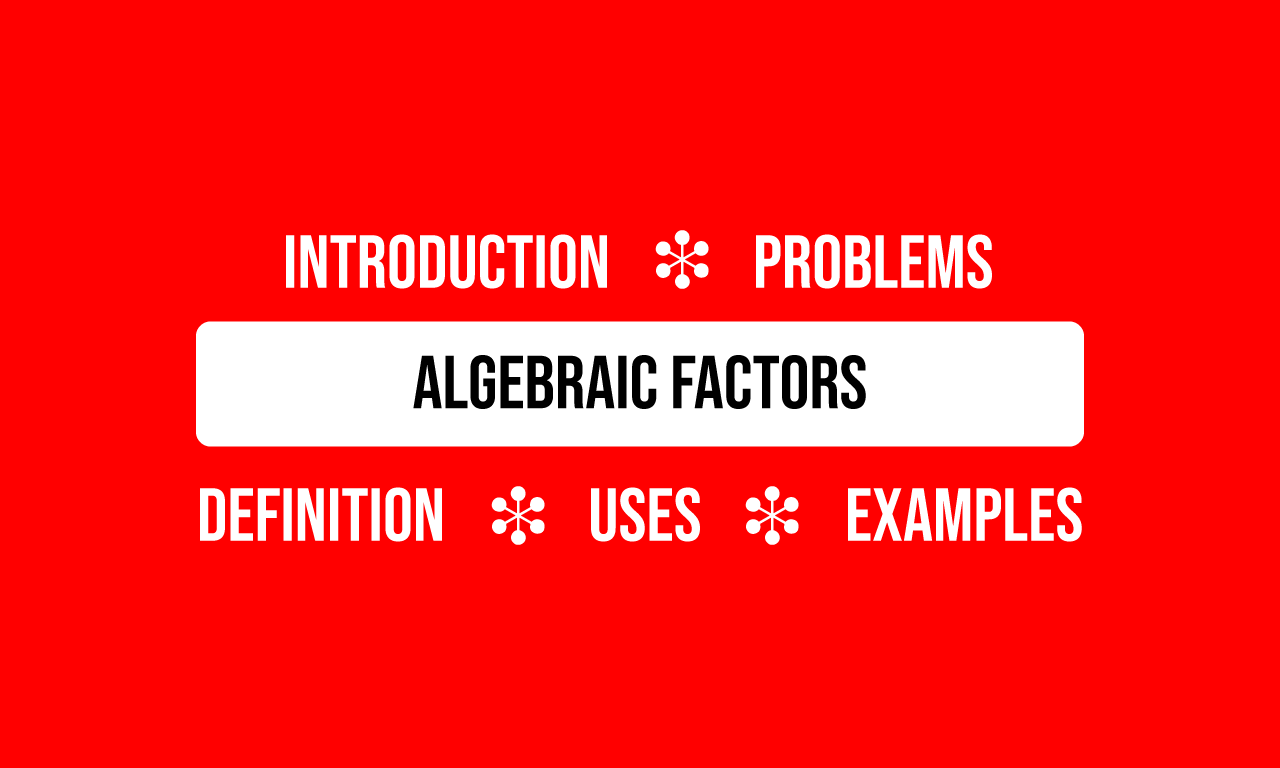A quantity in algebraic form that multiplies at least one quantity in a term of an expression is called an algebraic factor.
A term in an algebraic expression or the whole algebraic expression is simplified as a product of two or more multiplying expressions for some reasons. Each multiplying expression represents a quantity in algebraic form and it is called a factor in algebraic form. It is simply called as an algebraic factor in mathematics.

$(1).\,\,\,$ $ax$
$\implies$ $ax$ $\,=\,$ $a \times x$
$(2).\,\,\,$ $x^2(x-3)$
$\implies$ $x^2(x-3)$ $\,=\,$ $x^2 \times (x-3)$
$(3).\,\,\,$ $(x+a)(ax+b)(x^4+7x-c)$
$\implies$ $(x+a) \times (ax+b) \times (x^4+7x-c)$
The above three examples have cleared that an algebraic factor can be a literal, monomial, binomial, trinomial and so on.
There are three advantages with the algebraic factors in mathematics.
An algebraic expression is mathematically defined in either sum or difference or combination of both. However, it should be simplified in factor form in some cases by factorisation. So, it is essential to learn how to factorise (or factorize) the algebraic expressions in mathematics.
In mathematics, there are six methods for factorizing (or factorising) the algebraic expressions. Now, learn each method of factoring the algebraic expressions with understandable steps of solution.
A free math education service for students to learn every math concept easily, for teachers to teach mathematics understandably and for mathematicians to share their maths researching projects.
Copyright © 2012 - 2025 Math Doubts, All Rights Reserved